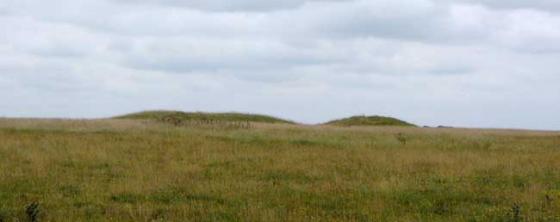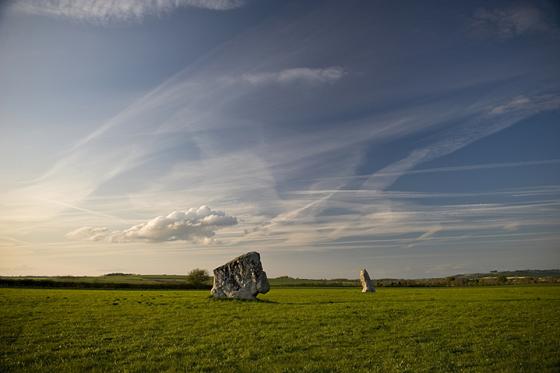Mount Wood Fieldnotes – Sunday 13-04-08
Seeing site listed on TMA web site, decided to visit while cycling around Cherhill / Oldbury area. I Know some of the bridleways of Yatesbury and Compton Bassett as they lead out towards Avebury. Leaving the A4, opposite track to the White Horse, go down Park Lane to the farm by triangle wood. Up the bridleway and the mount is on the left, just over the fence, as the ground levels off.
I’ve seen many barrows before but this one is truly different. 8 Feet high and 25 feet in diameter, it looks like a mini Silbury Hill. It’s conical shape and steep sides seem to have never been dug by man or beast. As a consequence, it is undated, but is thought to be Romano-British. (Looks like it slipped through TMA Roman net!). As you can see from the pictures, it has a number of beeches and sycamore trees growing on and around it, but is still in perfect condition. Maybe, and this is a wild guess, it is a bowl-barrow with another burial on it’s top. LVG didn’t seem to know what to make of it either as it’s marked down as Ba, Roman or later. It is Scheduled Monument No.SM12338. It must had always been known for being different. Why else would it be called Mount wood rather than Barrow wood or Barrow copse? I have included a picture looking towards Oldbury Castle from the site to illustrate it’s prospect.
On leaving, I travelled down the rest of the bridleway and on towards Nolands farm and Jugglers Lane. I was struck by the width and straightness of the later track. It screamed Roman to me with the area towards the end may be a ruined building of some sort. Needs more investigation, me thinks.
I know that the site of Cherhill Church is built over a Roman villa or shrine. I also know that a major Lay-line passes through this same site, as it does the church in Calne, Stanley Abbey, Lanhill and the temple of Apollo at Nettleton. In the other direction, the Lay-line travels through Silbaby and the Sanctuary before going through Savernake forest and the middle of Tottenham house.
Chance – April 2008































































































































